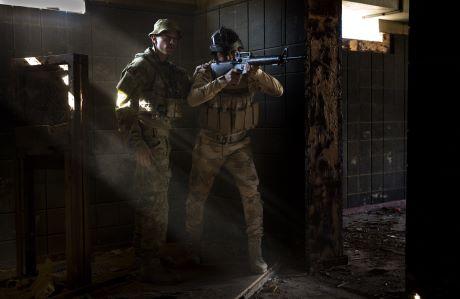The recently released Defence White Paper (DWP) captured a marked shift in the Australian Defence Force’s attitude toward International Engagement. This shift called for an increase in the number of Defence members with language qualifications, an increased tempo of engagement, and a re-alignment of those with whom Defence should engage. This direction carries significant weight - to meaningfully develop language skills, cultural awareness and regional familiarity requires at least a twelve-month investment in an individual. Furthermore, once such investment has been made, the organisation needs to ensure that there is a viable return of investment from such individuals, in order to meet its directed tasks.
These challenges have been analysed in an article, ‘Strategic Planners’ in the Autumn edition of the Australian Army Journal. This article proposes what is essentially a human resources paradigm for selecting, developing and retaining, those individuals who demonstrate an affinity for working by, with and through foreign partners. In so doing, it describes an evolution of lessons from Afghanistan and Iraq for how the Army needs to organise if it is to train foreign militaries.
This idea is not revolutionary. Australia’s own experience in force generating personnel to the challenge of the Australian Army Training Team Vietnam (AATTV) espoused a selection model, deliberate training and education, and often repeated deployments of such members to particular postings within South Vietnam. At a similar time, the United States Army was establishing its “Green Berets” with a regional orientation, language skills and an institutional purpose of training foreign forces.
Demonstration of the value of such investment was seen in the unorthodox partnered strategy that has been applied by the United States in a wide range of different theatres. Recent examples include partnering with the Northern Alliance in Afghanistan to defeat the Taliban., the long-term inter-agency approach to combating the Columbian narco-insurgency; and the small-scale footprint used to assist the Philippines Government in Mindanao province.
In 2005, the United States military experienced an inflection point regarding military enthusiasm to build the capacity of partner forces, nested within the broader need for a counter-insurgency strategy. Following this recognition, the training of foreign forces became a mainstream military agenda. A plethora of training notes and open-source commentary flowed for how one was to conduct partner force assistance (PFA), indigenous capacity building (ICB), security force assistance (SFA), train, advise and assist (TAA), or other similar three-letter acronym tasks. The resultant flood of terminology reflected the bottom-up adaptation to the task and masked that many deployed personnel had not been organisationally prepared for such tasks. With such context, it should not be surprising that the development of partner force capacity was destined for mixed results at best.
The Australian operational commitments of the time - the Australian Army Training Team Iraq (AATTI), Operational Mentoring and Liaison Teams (OMLTs) in Afghanistan, and embedded advisors at the Afghan National Army Officer Academy (ANAOA) - all required language, cultural awareness and “soft skills” that cumulatively necessitated emotional intelligence (EQ) on the part of the individual and deliberate investment on the part of the organisation. However, a selection criterion for the advisors sent to such missions was conspicuously absent, there was little to no language preparation for such advisors and there was little formal training in how advisors should advise. Indeed, the Australian Army still lacks formal doctrine for this mission.
However, the US military adapted via the “Afghan Hands” program, a training program that requires trainers to undergo a twelve month language course. “Afghan Hands” are then deployed repeatedly to Afghanistan to develop familiarity and rapport with their partners. The United States Marine Corps recently commenced the Regional, Culture and Language Familiarisation (RCLF) program, assigning Marine Corps Officers to a regional orientation. And the United States Army commenced a Regionally Aligned Forces (RAF) program for assigned Brigades to develop familiarity with the cultural nuances of certain regions through long-term alignment and repeated international engagements.
The Australian Army should similarly adapt. The “Strategic Planners” concept espouses that investment in the individual to a regional alignment can serve to build Australian Defence Force capability for future partnering missions. In the short-term, such skills can be developed by increasing availability of language training and the heightened level of international engagement directed by Government. In the long-term, such investment can be realised through the posting of such individuals into Defence Attaché positions, ideally, after a member has focussed upon that particular country or region for their entire career. Between such appointments, these individuals will undoubtedly be needed to meet the organisational requirement to fill staff appointments. However, in this model staff would be empowered with regional awareness of the human terrain that they would seek to influence.
For an Army posturing to operate in a future crowded, connected and congested battle-space, the institutionalisation of lessons from “wars amongst the people” is a requirement. The “Strategic Planner” concept codifies these lessons into the very fabric of our most important asset – our people.



